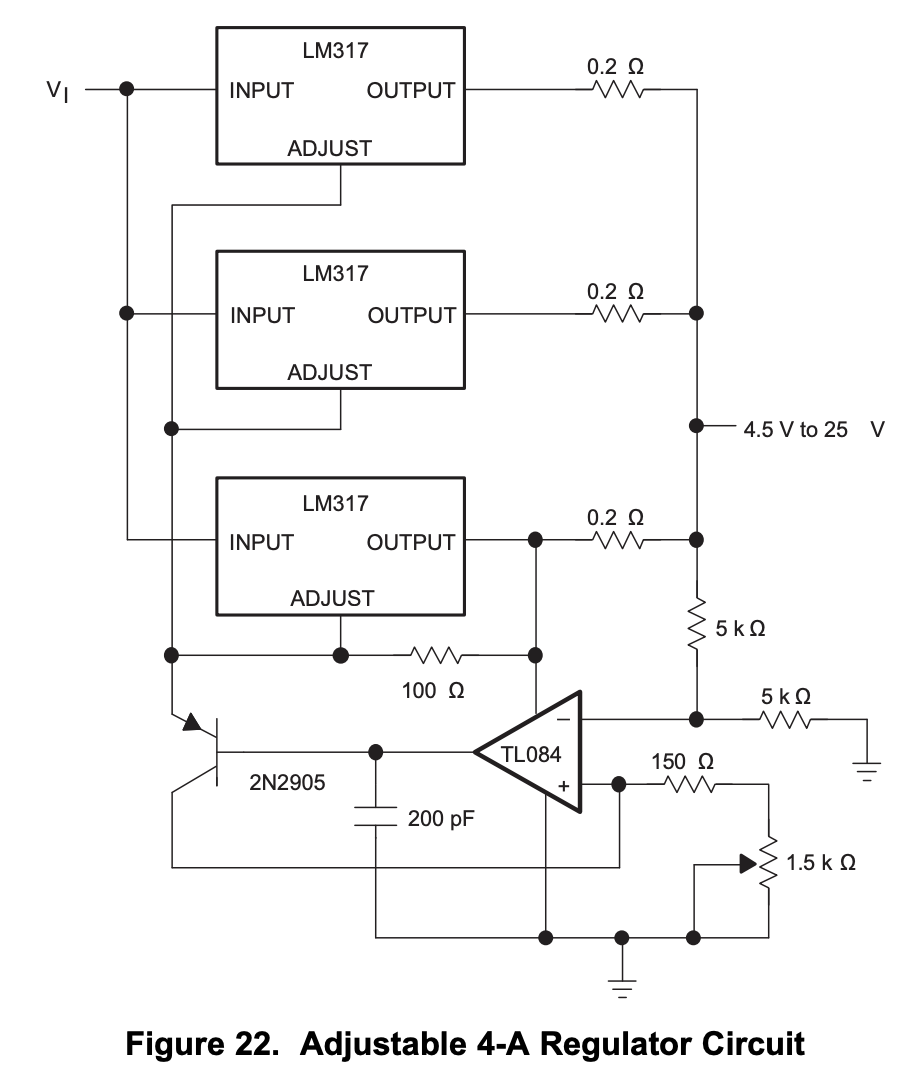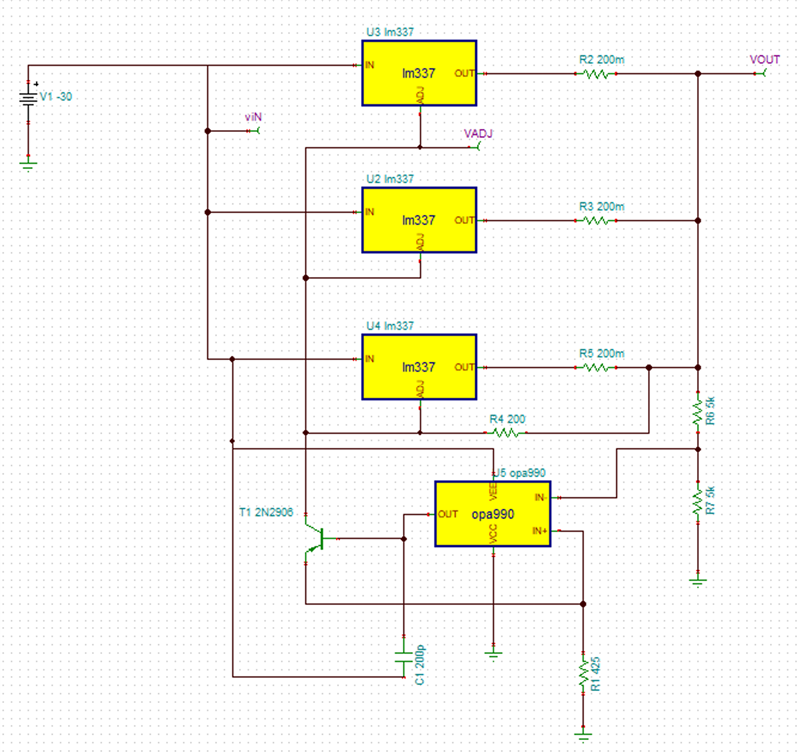Other Parts Discussed in Thread: LM337, LM317, LM237, LM137, UA79, LM79, LM120
I currently have a positive/negative power supply design using the LM317 for the positive side and the LM337 for the negative side but need more than the 1.5 A they can provide. I see that the LM338 is a substitute for the LM317 that can handle in excess of 5A and should work perfectly. However, I can't find an equivalent for the LM337. Is there such a chip or is there a better approach?
Thanks,
Mike Pitman




